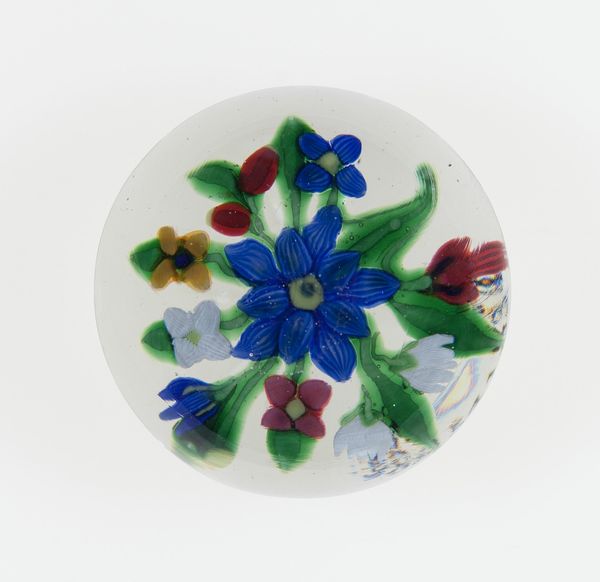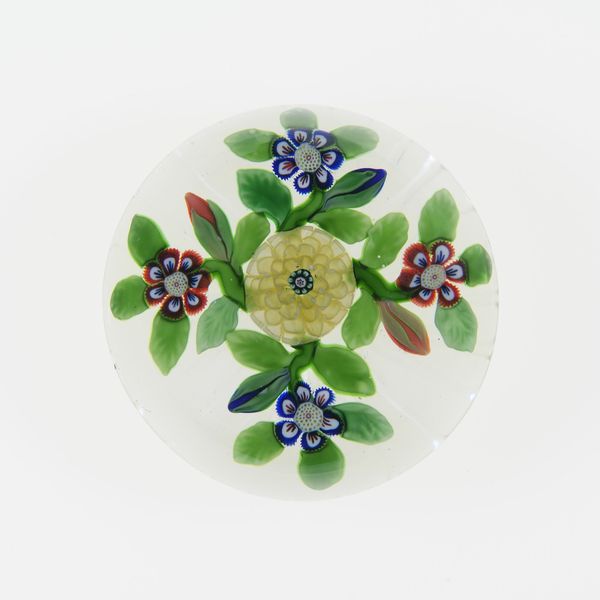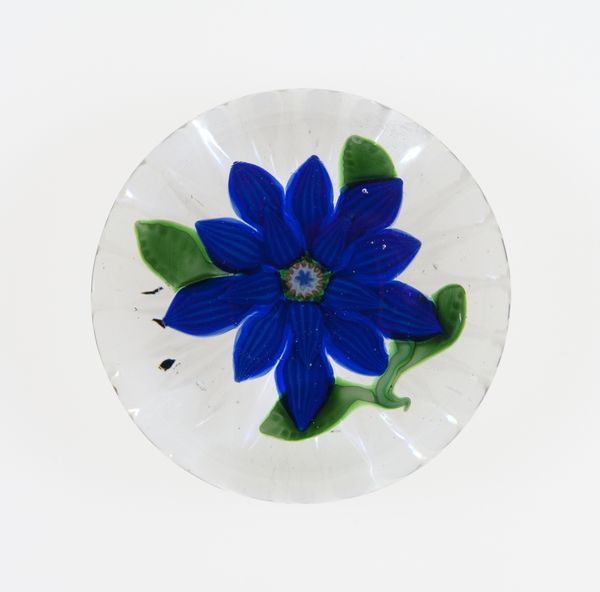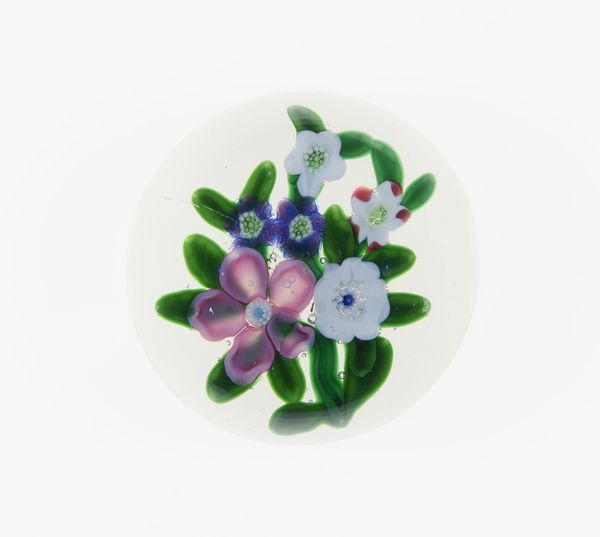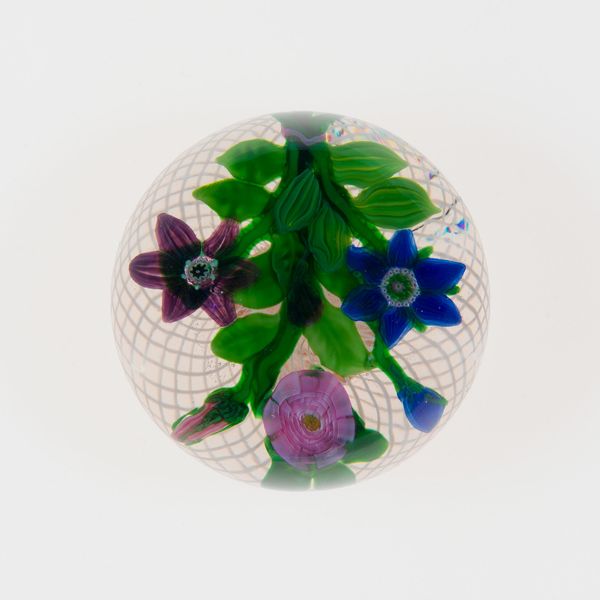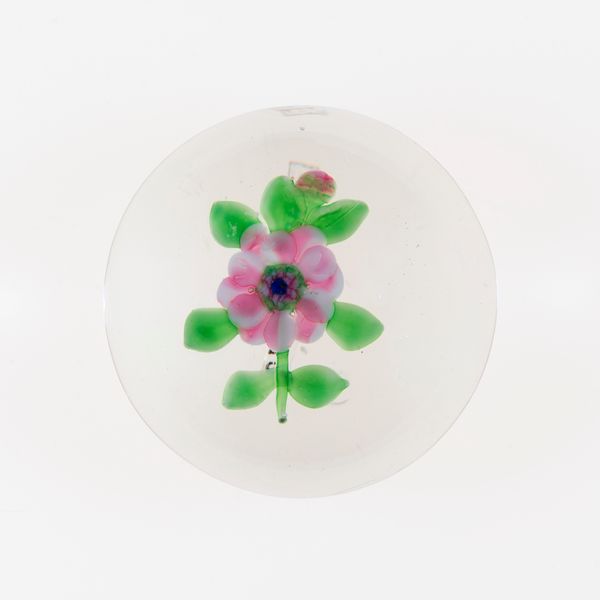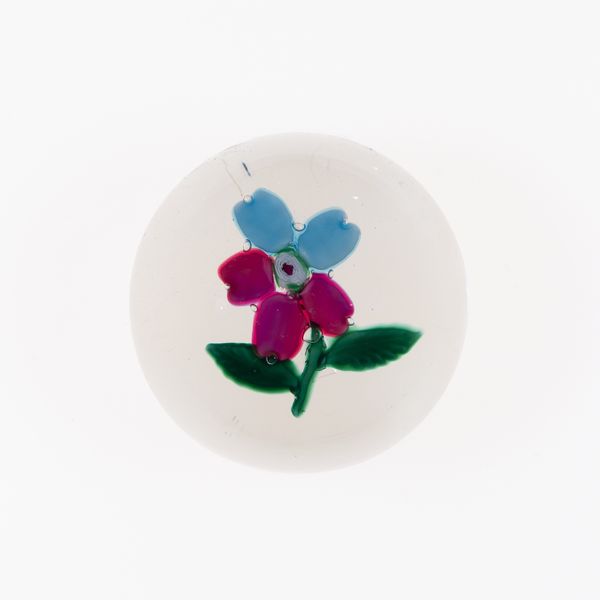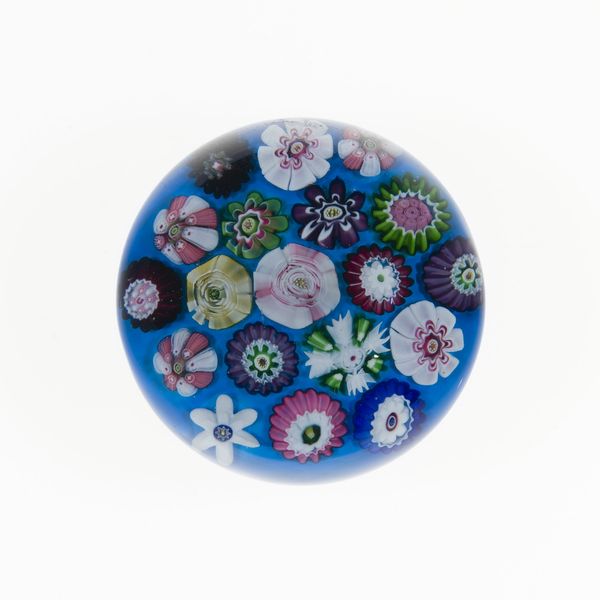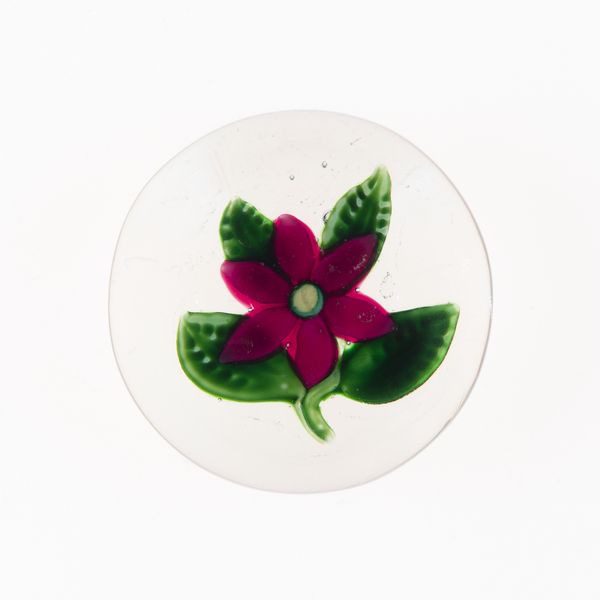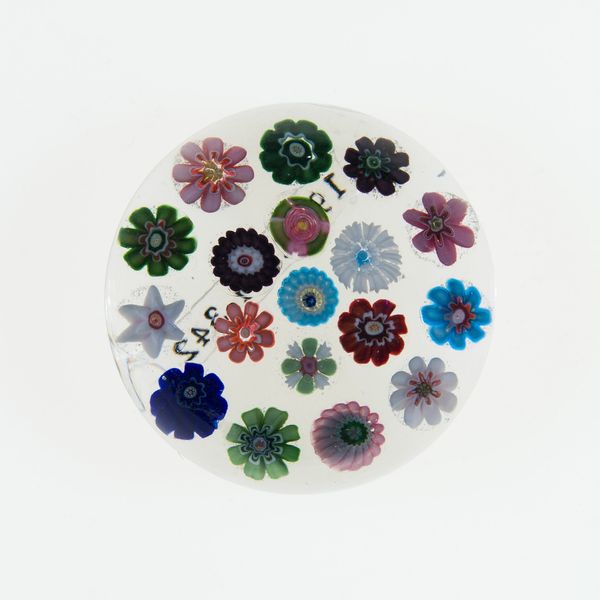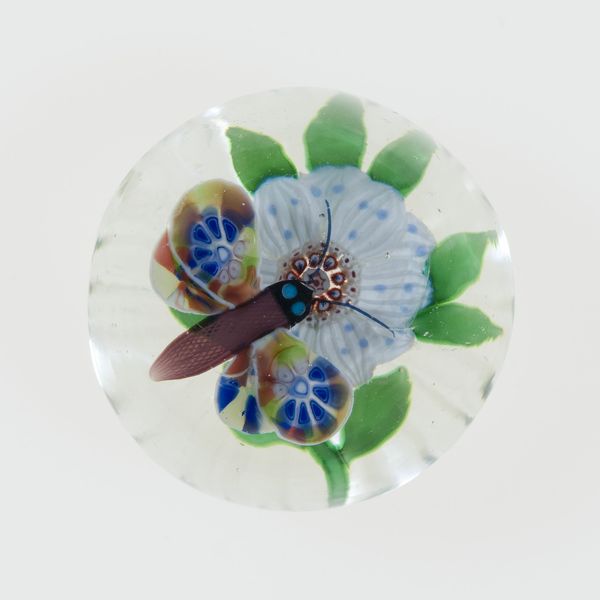
paper, glass
#
paper
#
glass
Dimensions: Diam. 6.2 cm (2 1/2 in.)
Copyright: Public Domain
Editor: This gorgeous glass paperweight, believed to be from the 19th century and attributed to the Compagnie de Saint Louis, has such delicate floral arrangements encased within it. It looks both fragile and permanent all at once. What's your take on it? Curator: I'm immediately drawn to the glass-making process itself. The labor involved in creating each individual glass element – the flowers, leaves – and then encasing them perfectly requires specialized knowledge. Do you see any disruption in the flawless clarity of the glass, or bubbles suggesting imperfections in the glass production process? Editor: Not really. It all looks smooth and polished to my eye. But how does thinking about its production enhance our understanding of the object as a work of art rather than just decoration? Curator: The paperweight shifts the traditional boundaries. By examining it through the lens of production, we understand how 19th-century techniques democratized the process, allowing what could have been just a precious skill, such as glassblowing, to be harnessed and standardized in an applied fashion for the burgeoning middle class of the industrial era. It is meant to be used as well as enjoyed, democratizing art itself. The value lies in the skill of the maker, who found ways to blend the aesthetic with the functional. How does the commercial nature of this beautiful, though quotidian, object influence your view? Editor: I hadn’t thought about that. It's not just a pretty thing, but a marker of shifting industrial forces too! It seems to give credence to the material and those who produced it, rather than diminishing its value as 'just' functional or decorative. Curator: Exactly. This reminds us that so much is learned when the emphasis is placed on the means of creating art.
Comments
No comments
Be the first to comment and join the conversation on the ultimate creative platform.
